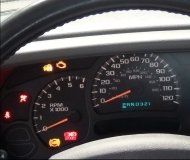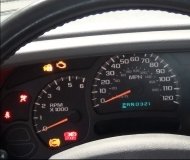"When to try to start the car it will crank longer than usual before it will turn over"
"Crank" and "turn over" are the same thing. It means the starter is spinning the engine.
To address one comment first that you got from a mechanic, a problem with a coolant temperature sensor won't cause stalling. In many cases where a temperature sensor is reading an acceptable value, but a wrong value, that is no different to the Engine Computer than coolant temperature that is too low because of a thermostat stuck open or simply because the engine hasn't warmed up yet. Neither condition will lead to stalling, but if a temperature colder than actual is reported, the computer will command too much fuel, just like we used to have to do with a choke on a carburetor. Gas will only burn when it's a vapor. Liquid gas will put out a lit match. The job of the carburetor and intake system is to warm the gas and get it to a vapor by the time it goes into the cylinders. When the engine is cold, a low percentage of gas vaporizes in time, so we needed the choke to dump in too much gas in hopes a high enough percentage would vaporize to make enough power.
All temperature sensors have an extremely low failure rate because there's just one component inside them. When they do cause a problem, it is much more likely to be caused by corrosion between adjacent terminals in the connector or corrosion between mating terminals in that connector. That corrosion changes the resistance and that is where the signal voltage is interpreted as the wrong temperature, but still a plausible temperature, meaning it might read 35 degrees, for example, when the actual temperature is 60 degrees. Both are acceptable readings to the computer, but only one is correct. When the computer incorrectly interprets coolant temperature to be lower than actual temperature, all it will do is tweak the fuel metering calculations slightly to ask for a richer mixture. At worst you'll have reduced fuel mileage, and you might see black smoke from the tail pipe.
Almost all temperature sensors are fed with 5.0 volts, then they draw that down to between 0.5 and 4.5 volts. That is the acceptable range to the computer. The voltage has to go outside that range to be detected as a defect and for the computer to set a diagnostic fault code. About the only way that is going to happen is if one of the sensor's wires is open, (cut), rubbed bare and shorted to ground, or the two wires are shorted together. You can force the computer to set a fault code by unplugging the sensor while the ignition switch is on too. Even that won't cause stalling. While the computer sees the 0.0 or 5.0 volts, it knows there's something wrong with that circuit, so it stops adding those readings to the fuel metering calculations. It approximates that temperature by looking at other data and at how long the engine has been running, then it "injects" that approximate value and runs on that.
Now that I've shared all that wondrous information, it sounds like you have a totally different cause for the stalling, provided this never occurs when driving at a speed high enough to require your foot to be on the accelerator pedal. When the battery was disconnected, the computers lost their memories. As soon as you start driving again, all that stored data will be rebuilt without you even noticing, ... Except for "minimum throttle". Until that is relearned, idle speed will be too low and can cause a crank / no-start, a long crank time as you described, a lack of "idle flare-up" to 1500 rpm at start-up, and a tendency to stall at stop signs. You may get "hunting" or unstable idle speed, especially when shifted into gear. Until minimum throttle is relearned, the computer won't know when it must be in control of idle speed, and idle speed will be too low.
You have to force the relearn for minimum throttle by meeting the conditions the computer needs to see to know when your foot is off the accelerator pedal. That is high intake manifold vacuum for a specified period of time. To say that a better way, ... Drive at highway speed with the engine warmed up, then coast for at least seven seconds without touching the pedals.
That simple step will solve low idle speed about 95 percent of the time. In the rare event it does not, you'll need a scanner to view live data. That's why I asked if you have access to one. It will show the "step" number the computer has placed the idle speed motor to on a range of 256 steps. For a properly-running engine that's warmed up, you'll typically find it on about step 32. With one misfiring spark plug on a V-8 engine, it will be around step 50. If you find it listed at step 0, minimum throttle hasn't been relearned yet and the computer isn't doing anything to get idle speed up to where ti should be.
Thursday, April 5th, 2018 AT 6:12 PM



